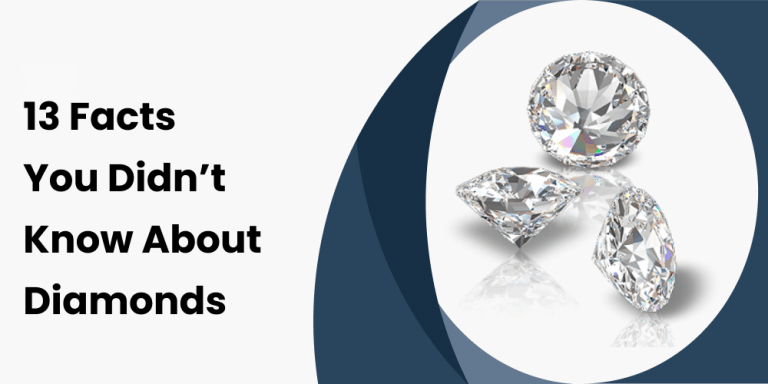While there are many factors to consider when choosing a diamond for your engagement ring in Denver or any other jewelry piece, such as the 4 Cs, diamond form, and your budget, have you ever wondered about the diamond’s symbolism and origin?
The diamonds, the most valuable precious stone on Earth, have been coveted for millennia and are steeped in myth for their astonishing brilliance and symbolic value. To help you discover more about the diamond’s interesting history, we’ve compiled a list of some fascinating facts and lore about this wonderfully unique jewel.
What is the Origin of Diamonds?
Diamonds are the hardest natural stone on the planet, created naturally beneath the Earth’s crust by tremendous heat and pressure. Volcanic action brings rough diamonds to the surface of the Earth. Natural diamonds are majorly sourced from South Africa, Russia, and Canada. While diamonds are also sourced from all over the world.
We at Denver Diamond Source, provide you with natural conflict-free diamonds. That is without the label of blood diamonds. Lab-grown diamonds are also available at Denver Diamond Source.
What is the Purpose of A Diamond?
Diamonds are prized for their extraordinary hardness, unrivaled brilliance, and emotional importance. Diamonds are built up almost entirely of carbon atoms and are so hard that the only mineral that can scratch their surface is another diamond.
What Makes A Diamond So Valuable?
Diamonds are nearly as old as the Earth and are becoming increasingly rare as their formation takes billions of years. The formation begins deep within the Earth, and only a small percentage of these carbon crystals make it to the surface. The rarity makes a diamond valuable. For brilliant diamonds in Denver, go to Denver jewelers.

Interesting Facts About Diamonds
Diamonds were regarded by the ancient Romans and Greeks to symbolize gods’ tears or splinters from fallen stars, and Cupid’s arrows were tipped with diamonds.
Diamonds are nearly as old as the world and form deep in the earth’s core over billions of years. Only a small percentage of diamonds survive the journey from the depths of the earth to miners. No two diamonds are alike, and each has its own set of characteristics such as internal inclusions and hue.
Diamonds are formed around 100 miles beneath the earth’s surface and are transported to the surface by deep volcanic eruptions. You will get all types of diamonds from diamond stores in Denver.
Diamonds are nearly 100 percent carbon and are made up of only one element. The carbon atoms link uniquely under intense heat and pressure far below the earth’s surface, resulting in diamonds’ magnificent and uncommon crystalline structure.
The word diamond originates from the word Adamas. It is a Greek word that means invincible. This is understandable because diamonds are the strongest.
- Hardest Natural Substance
Diamonds are the hardest natural substance on the planet, with a Mohs hardness rating of 10. A diamond’s surface can only be scratched by another diamond.
Diamonds have been prized and treasured by royalty and legendary entities for thousands of years. Diamonds were harvested and traded in India as early as the fourth century BC, according to historical records.
Diamonds were employed in the eyes of devotional statues by ancient Hindus, who believed that a diamond could protect its bearer from harm.
Diamonds were thought to provide the wearer power and courage in war by many ancient cultures, and some rulers wore diamonds on their armor as they rode into battle.
Diamonds were supposed to have therapeutic properties throughout the Middle Ages and were thought to be able to cure everything from weariness to mental sickness.
The Cullinan diamond, which weighed in at 3106 carats (1.33 pounds), was the biggest diamond ever discovered. The Cullinan diamond was discovered in South Africa around 1900. It was given to King Edward by the mine owner. The Cullinan was finally cut into hundred small diamonds and nine huge, with the three largest on display as part of the crown jewels in the Tower of London.
In 1477, Archduke Maxmillian of Austria gave Mary of Burgundy a gold ring with an M spelled out in diamonds, which was the earliest documented use of a diamond engagement ring.
The physical, chemical and visual qualities of lab diamonds are identical to those of mined diamonds. They are environmentally friendly diamonds that do not require mining.
Lab grown diamonds are made in a laboratory using advanced technology that mimics natural diamond production beneath the earth’s crust. Explore Denver Diamond Source lab-grown diamond collection.
Final Words
Were these fascinating facts about diamonds already known to you, or were they new to you? Visit Denver Jewelers for any kind of diamond. We’ve lab-grown diamonds too.
Even for engagement rings in Centennial, visit us. Our experts will help you in customizing the ideal ring for your big day.


